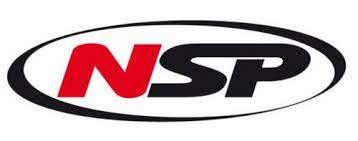Description
| Length | Width | Thickness | Volume | Weight +/- 5% |
|---|---|---|---|---|
| 8’0″ | 21 ³/⁴” | 2 ³/⁴” | 55 Liters | 4.46 Kg |
| 8’6″ | 22″ | 3″ | 64.5 Liters | 4.97 Kg |
Butter Knife Design
The Butter Knife with its classic outlines, perfect performance longboard rockers, and well-thought-out volumes is a winner across the board. Suitable for all abilities, surfers get to ride these as single fins in smaller conditions and discover their nose riding potential. And when it gets a bit punchier, you can just slip in the side bites and you have a perfect riding board for just about all conditions. As a thruster, a Butter Knife is balanced and predictable. Pop in a quad set up and use a bucketload of speed and increased bite to your advantage.
Butter Knife Fin setup
The Butter Knife comes with a 4+1 fin configuration allowing you to get creative in your setup. Try a quad, thruster, or even a single fin. NSP positioned the Surf 10 fin box slightly further back on purpose, making a realistic thruster setup work out as well.
All Butter Knives come with FTU fin boxes and are compatible with Futures® Fins (fins not included).
High-Performance accessories by NSP
Scroll to the bottom of the page for additional interesting shapes and suitable high-performance fins for the Butter Knife by NSP.
Who’s the Butter Knife for
Riders looking for a minimal with a deeper performance envelope are well-advised to check out the Butter Knife. With its classic outlines, perfect performance longboard rockers, and thought-out volumes, the Butter Knife is a shape for riders of all abilities looking for a mid-length that works and performs on smaller days.







